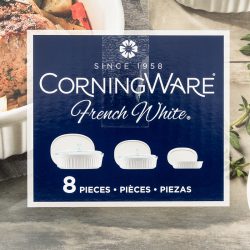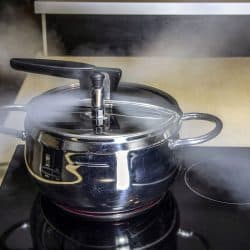Figuring out how to use the cookware in our kitchen isn't always easy. Do you have Corningware pots and pans you want to try using on your induction cooktop but don't know if this is safe? Can all Corningware products go on the stove or into the oven?
We have done extensive research into these questions and have the answers below!
Depending on your Corningware product, there's a possibility it's okay to use on your induction stovetop. Generally, any of the brand's newer glass-ceramic dishes are safe for induction/cooktop surfaces, although you want to double-check before doing this.
If you have older Corningware that feels fragile or stoneware and ovenware dishes, we don't recommend using them on your cooktop, as they will likely crack or shatter.
As we start this article, we will cover all things Corningware products and discuss whether you can use them on your induction cooktop. If you're new to the brand, have various dishes from them, or need to learn more about induction surfaces, we're here to help. With that said, let's dive in!
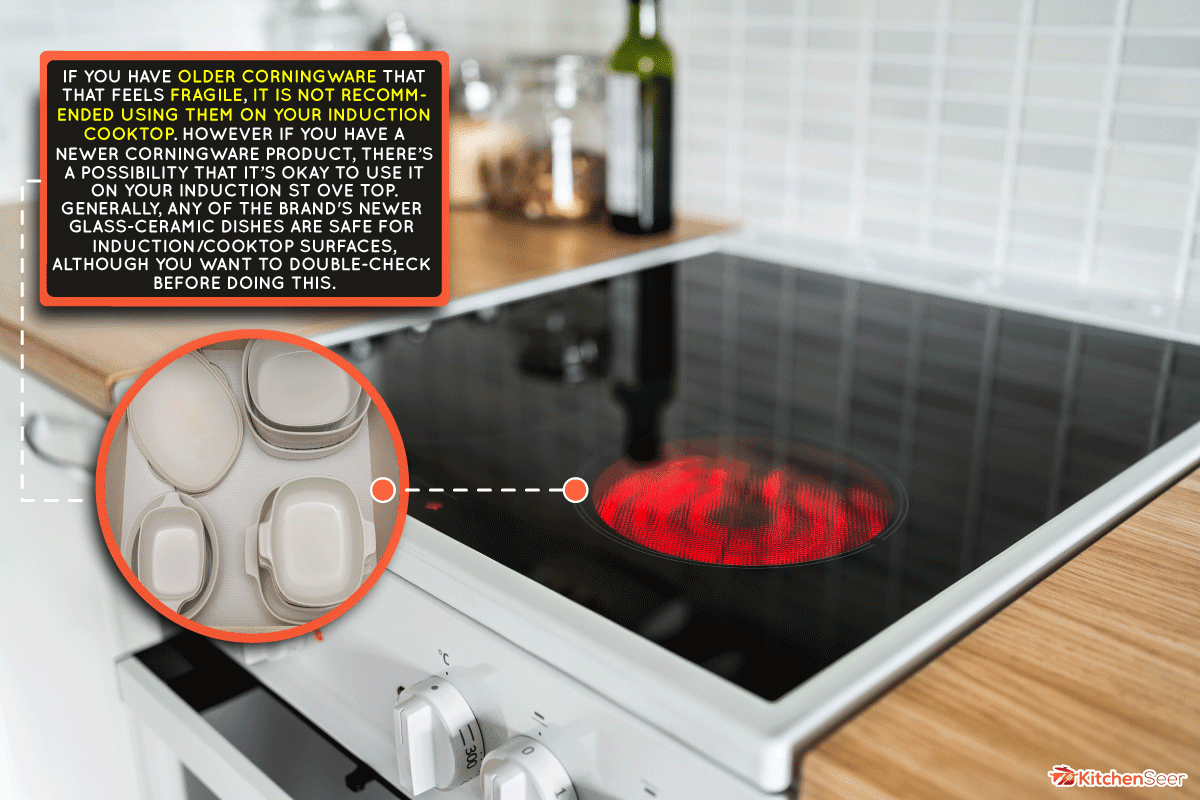
Is It Safe To Use Corningware On An Induction Stovetop?
Yes. This is safe to try if you have one of Corningware's glass-ceramic dishes on your stovetop. As we mentioned, Corningware products tend to be more fragile if they aren't glass-ceramic material, so we don't advise cooking with stoneware or ovenware products on your induction surface.
Corningware is mainly known for baking and oven-related cooking products. Therefore, it's common for people to get confused about whether their cookware is safe for stovetop use.
To figure this out, we recommend checking the bottom of your Corningware dish and seeing if it says cooktop-safe. There may also be a symbol.
Furthermore, Corningware products will come with a manual, so if you can't find a sign or symbol, please refer back to those instructions.
According to Induction Ranger, you also want to ensure your stovetop isn't too hot with Corningware, so avoid using super high temperatures with these products.

Can You Use Ceramic Dishes On An Induction Stovetop?
If the cookware you use is 100% ceramic, we don't recommend placing it on the stove. Generally, ceramic materials can't withstand an induction surface's heat and magnetic properties.
If you try to cook with one, there's a higher chance of damage to your cookware and stovetop. Therefore, we suggest only using cooking products with stainless steel over aluminum, cast iron, and enamel on metal on an induction cooktop.
An interesting feature of Corningware is that its products are a mixture of heat-resistant glass and ceramic, making them safe to use for stovetop and oven cooking or baking.
However, not every Corningware product can withstand induction surfaces or high temperatures.
Is It Okay To Use Vintage Corningware On An Induction Cooktop?
Although this is a shock to many, you can safely use many vintage Corningware pieces on an induction stovetop. Many experts claim that you can also use older Corningware in the oven and even serve food directly at the table.
However, not all Corningware products made before 2005 are safe to eat from (lead), so be cautious of using 20+-year-old dishes.
You also want to research your cookware before placing it on the stove or into the oven. Since Corningware is glass and ceramic material, it won't always tolerate certain surfaces and heating methods.
Can I Use Corningware In The Oven?
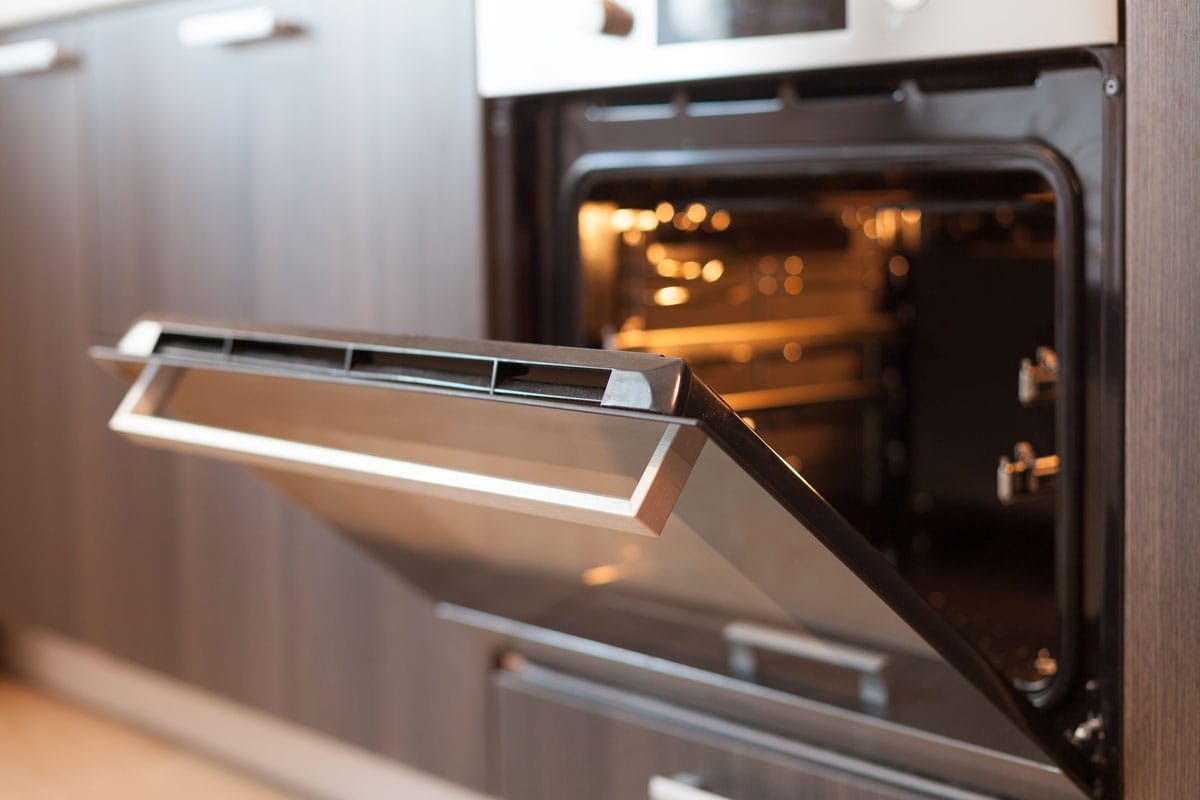
Yes! Like the stovetop, you can generally place Corningware into the oven without issues. According to experts, the best type of Corningware for the oven is glass-ceramicware, which follows our same cooktop recommendation.
That said, you can also use your Corningware stoneware and ovenware in a preheated oven, so that's good to know. Remember, you can't place Corningware stone/ovenware into the oven and preheat with it inside, so make sure to do that beforehand.
As we mentioned earlier, Corningware products can usually take heat well: just not too much. So, we don't recommend using your Corningware if you have a recipe that calls for 500 degrees Fahrenheit.
Even though these dishes are great for cooking/baking, you can't depend on them for extreme heat.
What Is The Highest Temperature For Corningware?
Now that you know your Corningware can go into the oven, it's essential to get the temperature right. Typically, Corningware products can handle heat between 350-450 degrees Fahrenheit.
Again, this isn't low by any means and should be fine for most recipes. The Corningware brand is known for cooking and baking in various forms, so you don't need to worry about quality.
However, your cookware will likely be glass/ceramic material, which can only tolerate so much heat. If you use your Corningware in extreme temperatures, there's a higher chance of your dishes exploding or cracking, which you want to avoid.
The same goes for an induction stovetop, so keep the heat within the recommended guidelines.
Is Corningware Safe On A Gas Stovetop?
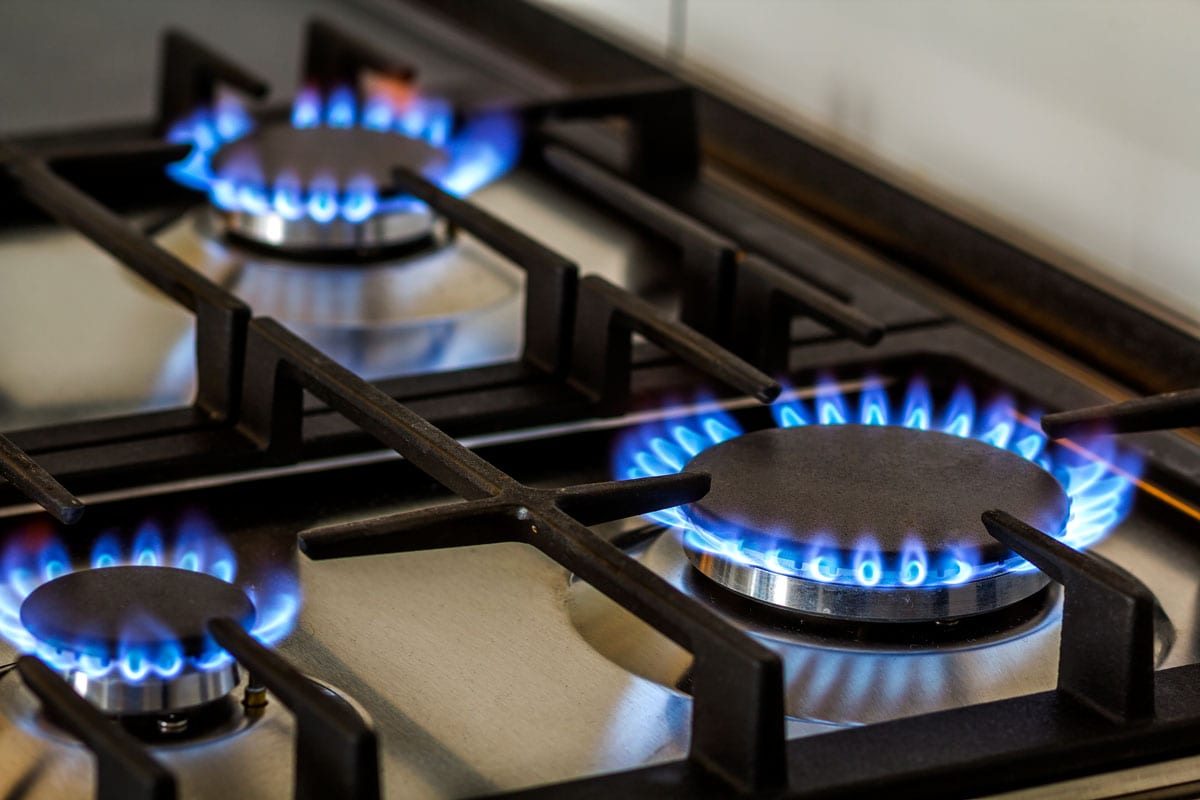
Although you can generally use Corningware dishes on a gas stovetop, you need to be cautious. As we covered earlier, all Corningware will have a pretty good heat tolerance.
The issue here is the surface you're cooking on. For example, gas stoves get hot: fast. Induction surfaces can also heat up quickly, which not all Corningware can tolerate.
Therefore, you need to check your product before placing it on the stove or in the oven. Another thing to note is that Corningware does not recommend using any of its stoneware or ovenware on your cooktop.
That applies to gas and electric surfaces.
Corningware warns against misusing its products in high heat, as this can result in cracked, exploded, or damaged dishes. If your Corningware explodes, this might also pose a major safety risk.
Furthermore, you also want to know when your product was made. Not all newer Corningware has the same capabilities as the older generation (stoneware specifically).
What Happens If My Corningware Gets Too Hot?
A few things will likely happen if your Corningware dishes become too hot. First, an overheated Corningware dish will crack under extreme pressure/temperature.
In addition, if you have your Corningware in a super hot oven, there's a chance it can explode. Luckily, the brand takes these things very seriously and will include instructions regarding heat tolerance with each pot or pan.
Glass ceramicware will distribute heat pretty well under normal circumstances, but we don't recommend pushing your cookware to the limit.
Can I Put My Corningware Into The Microwave?
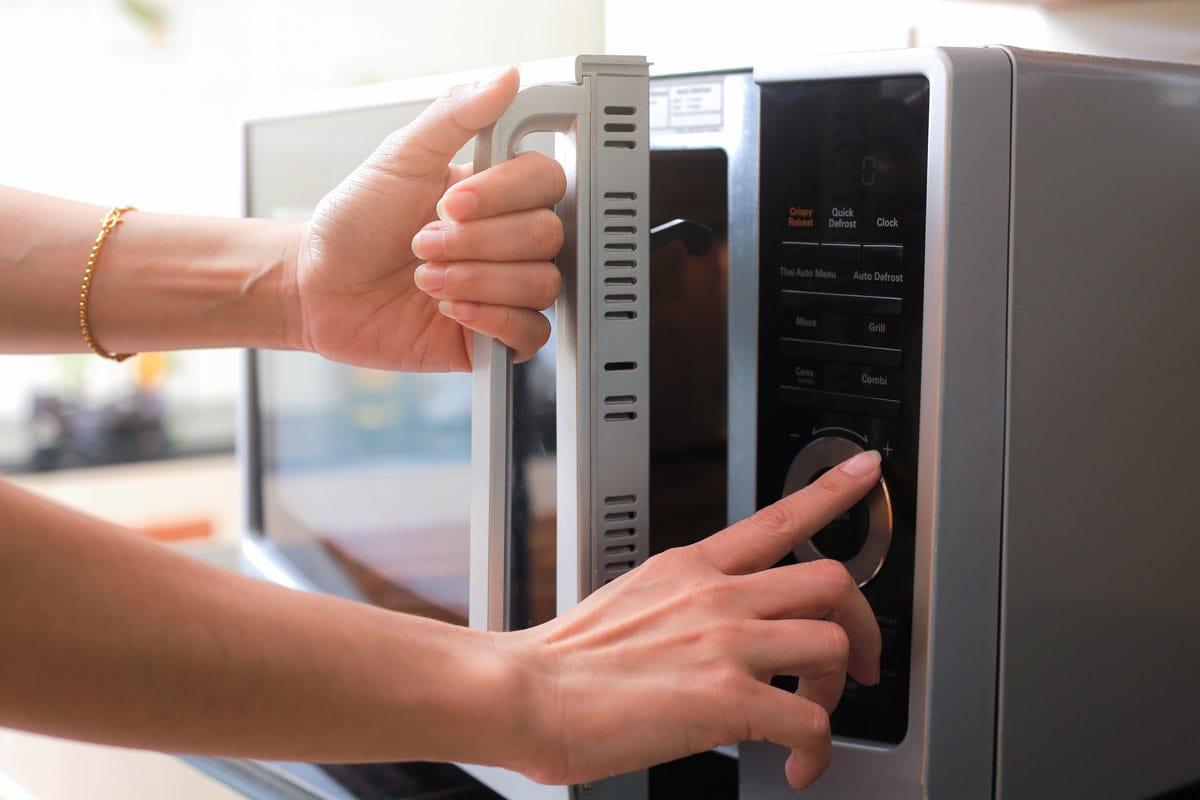
Yes! Most Corningware dishes are microwave-safe. Specifically, you can place Corningware's 'French White' and 'Gold' dishes into your appliance without worrying.
Considering that Corningware is such a major brand, they are constantly evolving and creating more heat/surface-tolerant products.
An interesting feature of the Corningware Gold line is that the gold embellishments are specially formulated not to be a conductor. Therefore, it's entirely safe to use them in the microwave.
Typically, your microwave will stay around 212 degrees Fahrenheit, which is well below the recommended heat for your Corningware dishes.
Regardless, if you have any questions about your Corningware products, don't hesitate to contact them via their website.
Do Corningware Dishes Have Metal In Them?
No. Corningware products do not contain metal. As we said, this brand uses a specialty glass-ceramic material, which allows you to place your dishes on the stove, in the oven, and even in your microwave.
Corningware focuses mainly on baking dishes, so you can expect these products to be more oven-focused by design. Regardless, you don't need to worry about metal in your cookware with Corningware, so that's good to be aware of.
Do Corningware Dishes Contain Lead?
Although newer Corningware dishes won't have lead, this is not the case for older/vintage products. You can expect all Corningware pre-2005 to contain unsafe levels of lead.
The source of this lead is the paint on your vintage cookware, which tests between 15,000 and 100,000 PPM. That's incredibly high, and you should avoid baking or eating from dishes that have even a trace of lead inside/on them.
Corningware confirmed that all of its pre-mid-2000s dishes contain lead, so this is not something to ignore. Again, lead isn't always going to harm you, but it can at high levels.
How Long Will Corningware Dishes Last?
Even though this varies, you can usually expect your Corningware dishes to last a while. Considering your Corningware products have a sturdy ceramic/glass material, you don't need to worry about getting down and dirty in the kitchen.
Corningware is a massively popular brand and has earned this acclaim due to its high quality. According to the Pocahontas Times, they've witnessed their Corningware products last 60+ years without issue.
Regardless of your cookware's material, that's an impressive timeline.
With that said, you need to take good care of your Corningware if you want to keep it for a long time. A few easy ways to do this include proper cleaning, safe cooking techniques, proper storage, and staying within your dishes' recommended temperature limit.
One of the main ways Corningware break is when they become too hot for too long.
To Finish Up
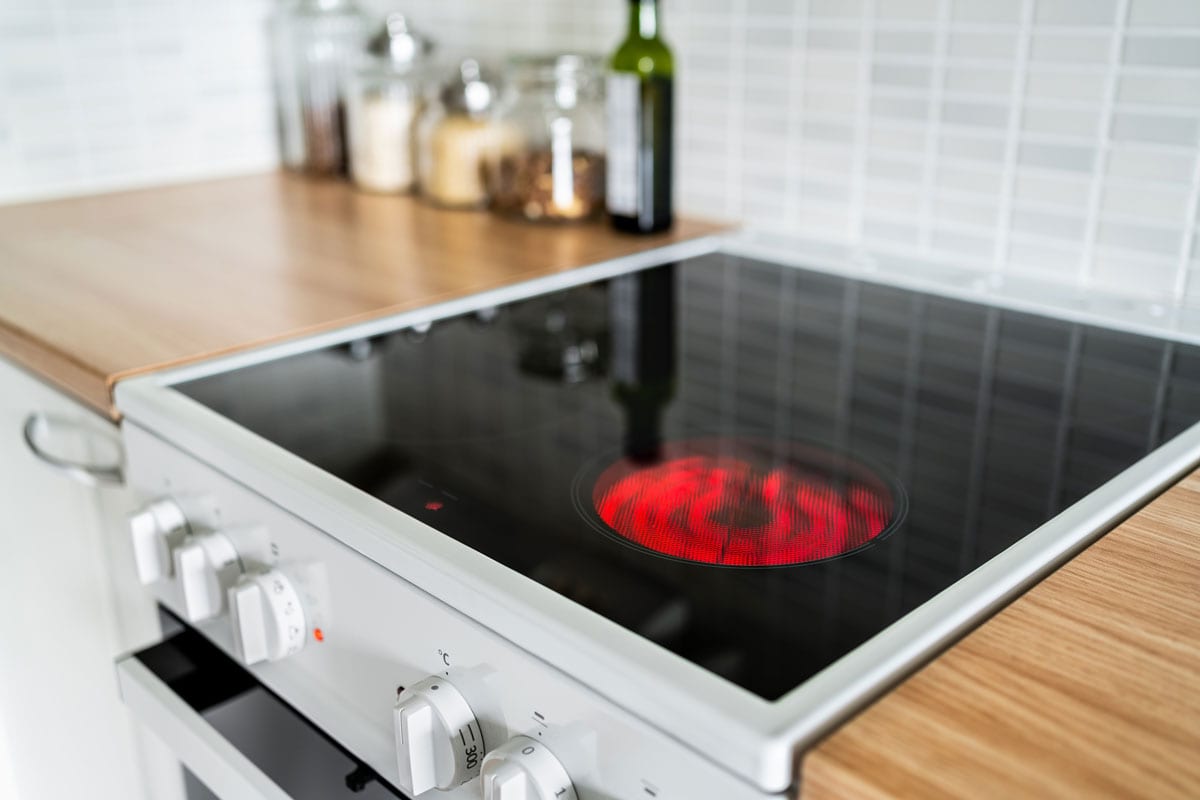
Whether you have Corningware from decadesago or recently bought a dish, it's always good to know its limits. We found that Corningware dishes can generally go on your induction stovetop as long as you keep the heat lower.
Since these pots/pans have a temperature tolerance of up to 350-450 degrees, you don't want to use them for high-heat recipes. You also don't want to keep your Corningware in high heat for too long, which can lead to cracking and damage.
Furthermore, vintage Corningware should also be fine for induction cooking, although anything made before 2005 likely contains lead and should be avoided.
Made it to the end? Check out these other related kitchen articles below:
If A Bowl Is Microwave Safe, Is It Also Oven Safe?
Does A Casserole Dish Need A Lid? [Here's The Rule Of Thumb]
Can Pyrex Be Used On The Stovetop? [Not A Simple Question!]

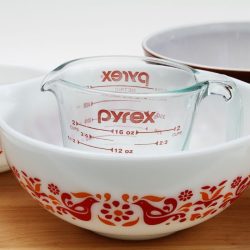
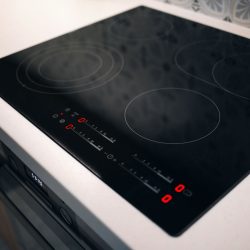
![Variety of baking dishes white colored old corningware on a white background, Is Vintage Corningware Toxic? [Detailed Reference Inc. Lead, Bpa, & Cadmium]](https://kitchenseer.com/wp-content/uploads/2022/09/Variety-of-baking-dishes-white-colored-old-corningware-on-a-white-background-250x250.jpg)
![Scalloped potatoes, potato casserole with the addition of herbs and edible chives flowers in a ceramic baking dish - Does Corningware Contain Lead? [Inc. Blue Cornflower, Spice Of Life, & French White]](https://kitchenseer.com/wp-content/uploads/2022/10/SCALLO1-250x250.jpg)
